29.03.2021
Expedition 65 Crew Press Conference
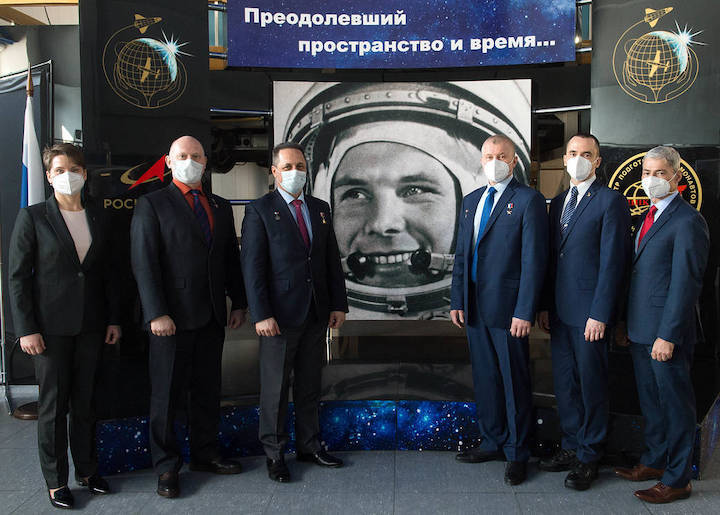
From left to right, Expedition 65 backup crew members NASA astronaut Anne McClain and Russian cosmonauts Oleg Artemyev and Anton Shkaplerov of Roscosmos, and Expedition 65 prime crew members, Russian cosmonauts Oleg Novitskiy and Pyotr Dubrov of Roscosmos and NASA astronaut Mark Vande Hei, are seen during a press conference on Wednesday, March 24, 2021 at the Gagarin Cosmonaut Training Center (GCTC) in Star City, Russia. Expedition 65 is slated to launch on April 9.,Image Credit: NASA/GCTC/Andrey Shelepin
Quelle: NASA
----
Update: 4.04.2021
.
Russia’s Soyuz spacecraft scheduled to fly to orbital outpost in April named after Gagarin
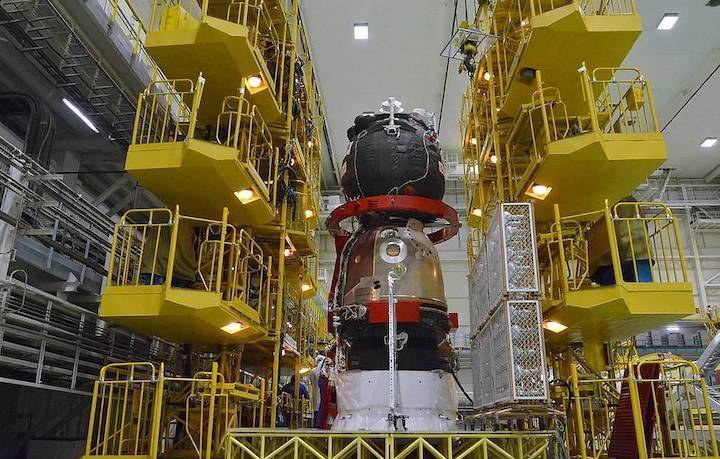
Russia’s Soyuz MS-18 manned spacecraft scheduled to deliver the next crew to the International Space Station (ISS) in April has been named after the world’s first human in space Yuri Gagarin, Roscosmos said in a statement on Tuesday.
"The Soyuz MS-18 spacecraft currently undergoing pre-launch preparations under the program of delivering members of the 65th basic expedition to the International Space Station has received its own name, Yu. A. Gagarin," the statement says.
The carrier rocket’s nose cone will also feature official symbols of the 60th anniversary of Gagarin’s flight in space. As Roscosmos specified, the name of the first human who orbited Earth also decorates the surface of the screen vacuum thermal insulation in the spacecraft’s habitation module.
Last time, the name Gagarin was assigned to the Soyuz-TMA spaceship that blasted off on April 5, 2011.
April 12 is celebrated as Cosmonautics Day throughout the world. This year will mark 60 years since a Vostok rocket orbited a Vostok-1 spacecraft with Soviet cosmonaut Yuri Gagarin on its board. Gagarin became the world’s first human launched into outer space. After making one orbit of Earth, Gagarin made a landing in the Saratov Region in Russia’s south.
+++
ISS orbit adjusted before Soyuz MS-18 launch
"On April 2, 2021, the Russian Mission Control Center specialists (TsNIIMash, part of Roscosmos) adjusted the International Space Station orbit in accordance with the station’s flight program," the statement says.
The maneuver was carried out with the engines of the Progress MS-14 freighter docked to the Zvezda service module. The engines started at 15.14 Moscow time (12.14 UTC) and burned for 129.3 seconds (more than two minutes). As a result, the ISS orbit was boosted by 360 meters to reach 419.8 kilometers above the Earth’s surface.
"Currently, TsNIIMash Mission Control Center specialists are analyzing the telemetry data and defining the ISS orbit parameters," the statement reads.
The maneuver was needed to form ballistic conditions prior to the Soyuz MS-18 crewed spacecraft launch and Soyuz MS-17 landing.
Roscosmos cosmonauts Sergei Ryzhikov and Sergei Kud-Sverchkov and also NASA astronaut Kathleen Rubins are due to return to Earth in the Soyuz MS-17. The next Soyuz mission, Soyuz MS-18, is scheduled to launch on April 9, 2021.
"The spacecraft will take Roscosmos cosmonauts Oleg Novitsky and Pyotr Dubrov, as well as NASA astronaut Mark Vande Hei to the station," the statement says.
Quelle: TASS
----
Update: 7.04.2021
.
Watch Next Space Station Crew Launch Live on NASA TV, NASA App
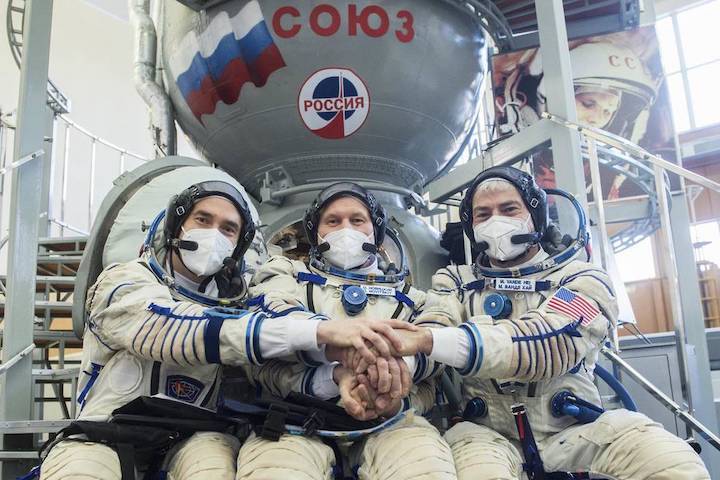
Three space travelers, including NASA astronaut Mark Vande Hei, are poised to launch Friday, April 9, from the Baikonur Cosmodrome in Kazakhstan to the International Space Station. NASA Television, the agency’s website, and the NASA app will provide comprehensive prelaunch and launch-to-docking coverage.
Joining Vande Hei aboard the Soyuz MS-18 spacecraft will be Soyuz Commander Oleg Novitskiy and Flight Engineer Pyotr Dubrov of Roscosmos for launch at 3:42 a.m. EDT (12:42 p.m. Kazakhstan time) on a two-orbit, three-hour journey to dock to the station’s Rassvet module. Launch coverage will begin at 2:45 a.m. This will be the second spaceflight for Vande Hei, the third for Novitskiy, and the first for Dubrov. The launch comes three days before the 60th anniversary of cosmonaut Yuri Gagarin’s launch to become the first human in space and the 40th anniversary of the first launch of NASA’s space shuttle.
The trio will join the Expedition 64 crew including NASA Flight Engineer Kate Rubins, who arrived on the station with Commander Sergey Ryzhikov and Flight Engineer Sergey Kud-Sverchkov of Roscosmos in October 2020, and the crew of the SpaceX Crew Dragon Resilience – NASA astronauts Michael Hopkins, Victor Glover, and Shannon Walker, as well as Japan Aerospace Exploration Agency (JAXA) astronaut Soichi Noguchi – who have been in orbit since November.
The spacecraft will dock to the station at 7:07 a.m., with coverage of rendezvous and docking beginning at 6:15 a.m. About two hours after docking, hatches between the Soyuz and the station will open, and the 10 crew members will greet each other. NASA TV coverage of hatch opening and any remarks by the crew or flight controllers on Earth will begin at 8:30 a.m.
Vande Hei, Novitskiy, and Dubrov will be part of Expeditions 64 and 65. The departure of Rubins, Ryzhikov, and Kud-Sverchkov on Friday, April 16, will mark the start of the new expedition.
Video of the crew’s pre-launch activities in Baikonur will air on NASA TV in the days preceding launch, beginning Monday, April 5.
The Expeditions 64 and 65 crews will continue work on hundreds of experiments in biology, biotechnology, physical science, and Earth science aboard the International Space Station, humanity’s only permanently occupied microgravity laboratory.
Quelle: NASA
----
Update: 9.04.2021 / 10:00 MESZ
.
Soyuz Crew Launch to the International Space Station
Soyuz MS-18 spacecraft lift off on a two-orbit, three-hour journey to the International Space Station! NASA astronaut Mark Vande Hei and cosmonauts Oleg Novitskiy and Pyotr Dubrov of Roscosmos are scheduled to launch at 3:42 a.m. EDT, Friday, April 9, from the Baikonur Cosmodrome in Kazakhstan. The trio will be part of Expeditions 64 and 65 on the station, where they'll continue work on hundreds of experiments in biology, biotechnology, physical science, and Earth science. This will be Vande Hei's second spaceflight, Novitskiy's third, and Dubrov's first.
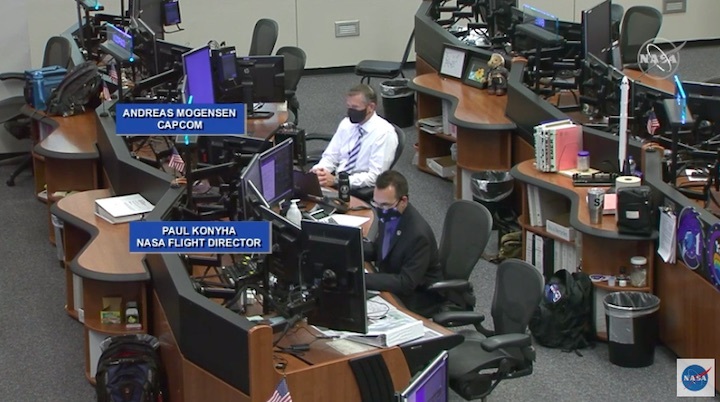
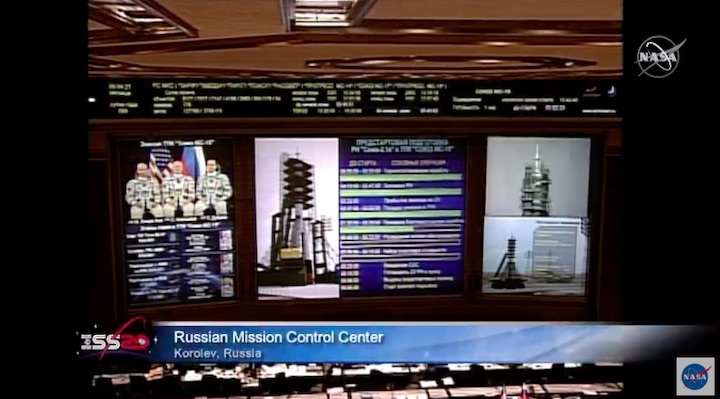
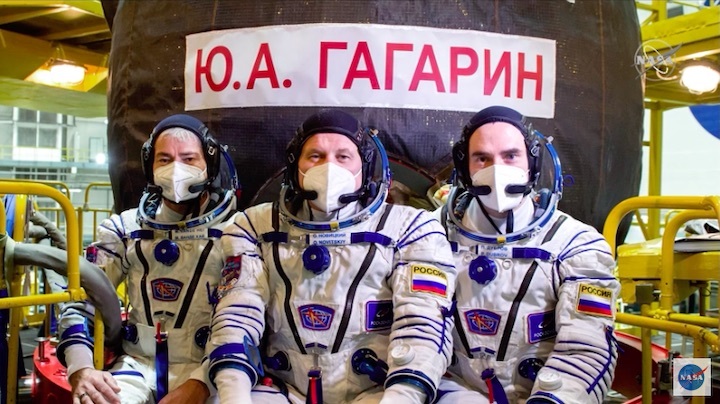
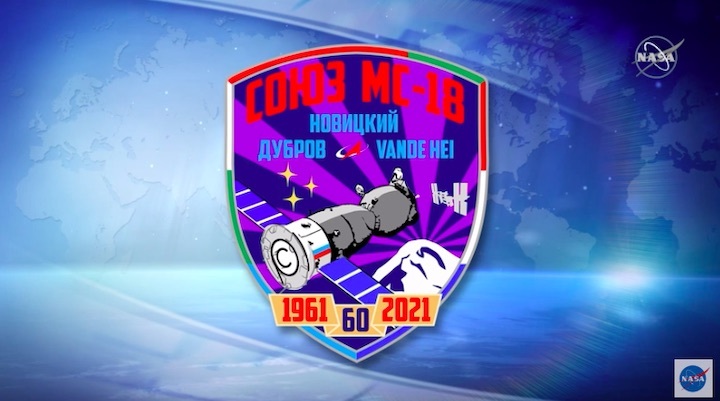
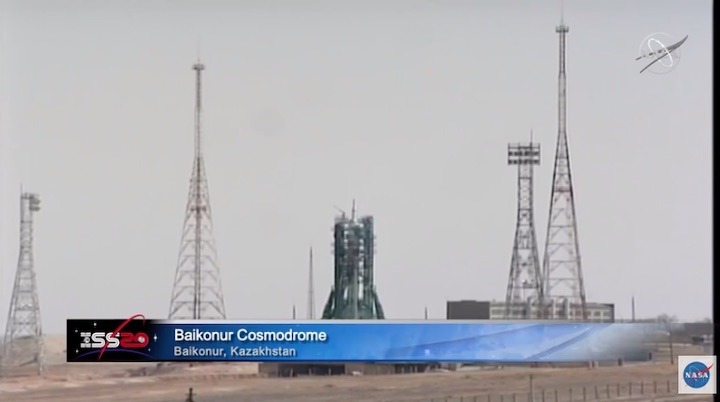
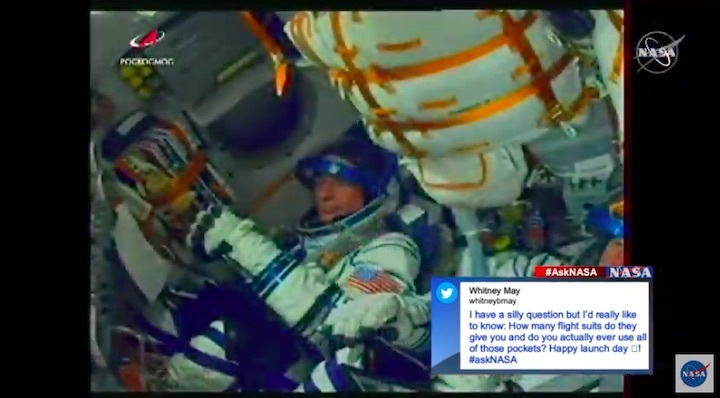
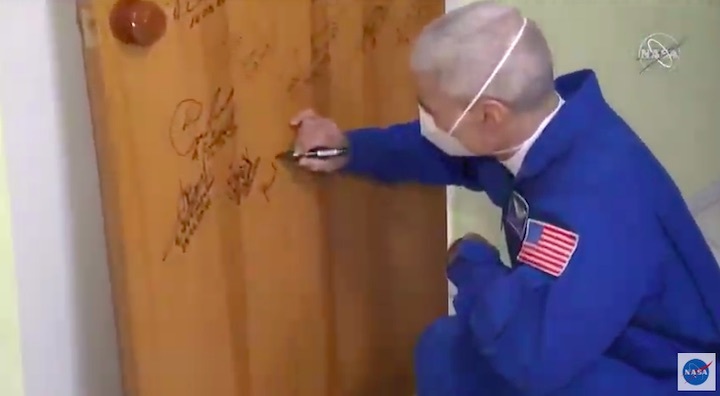
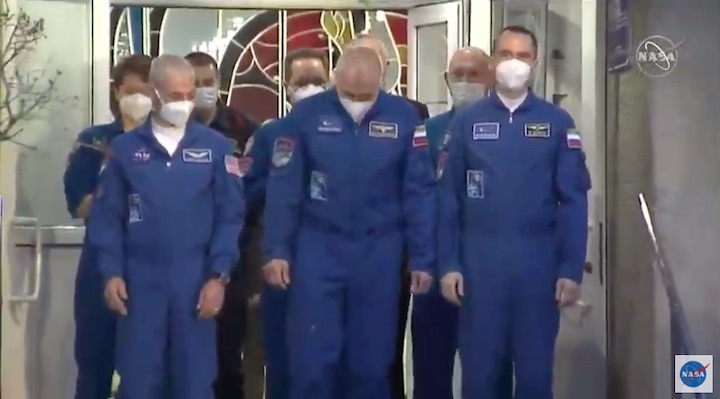
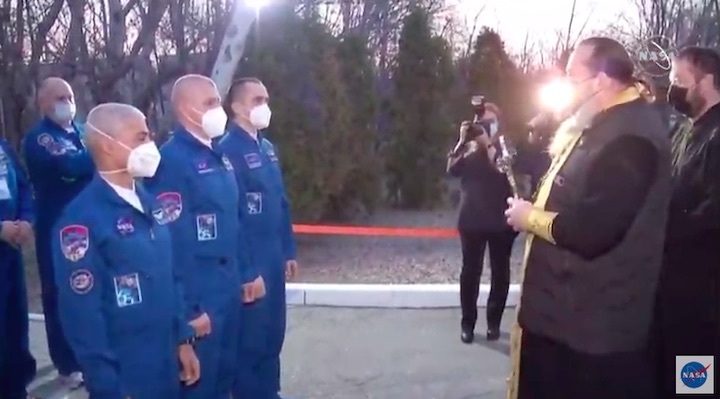


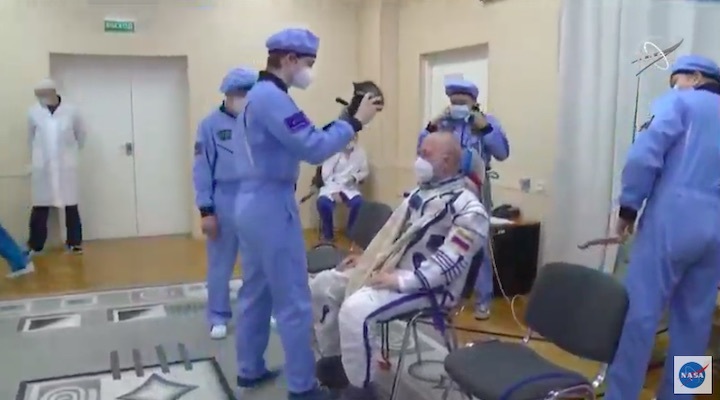
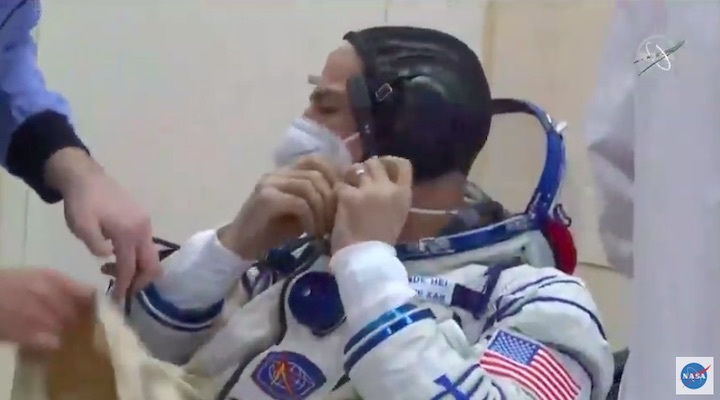
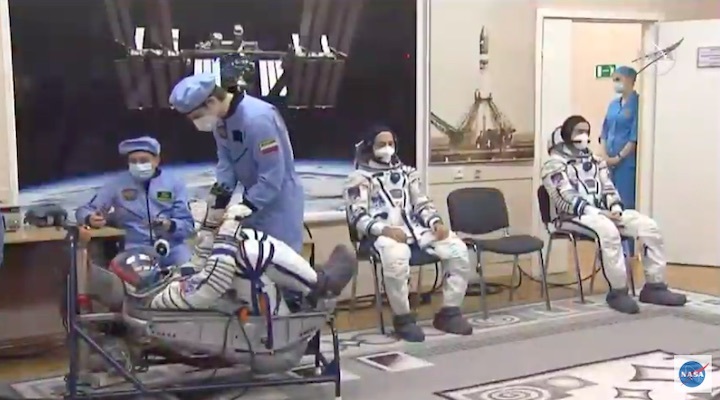
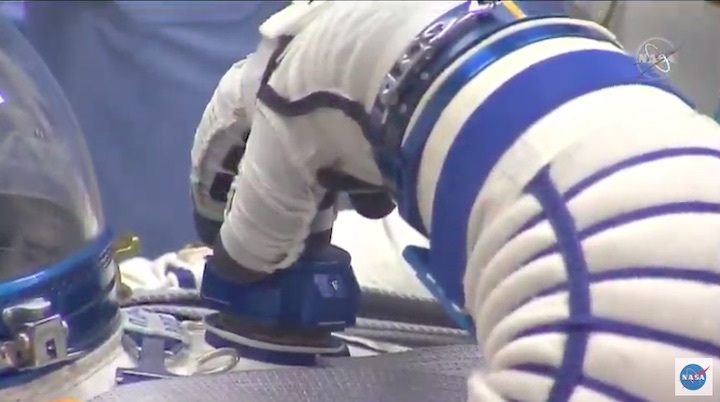

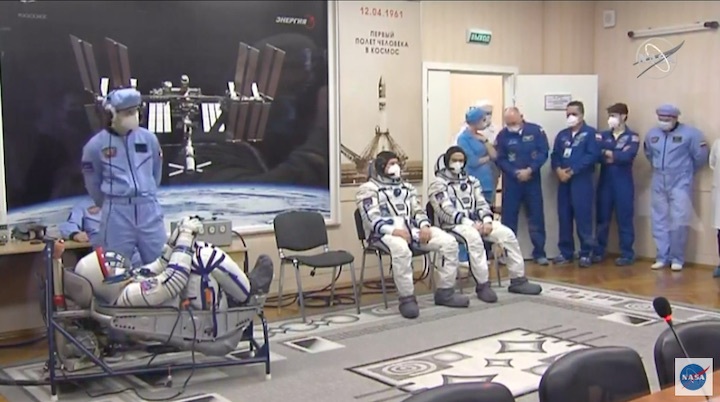
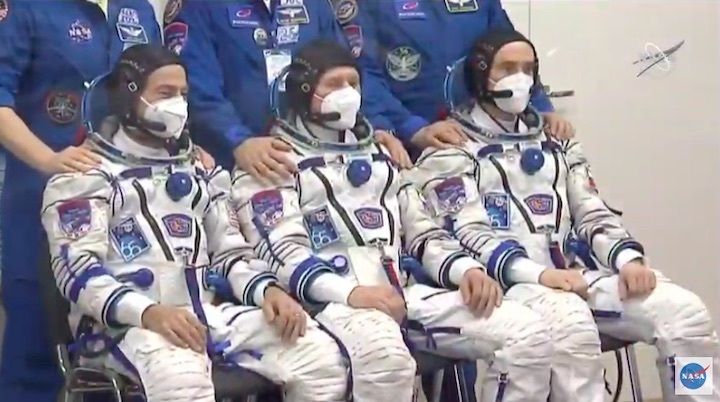
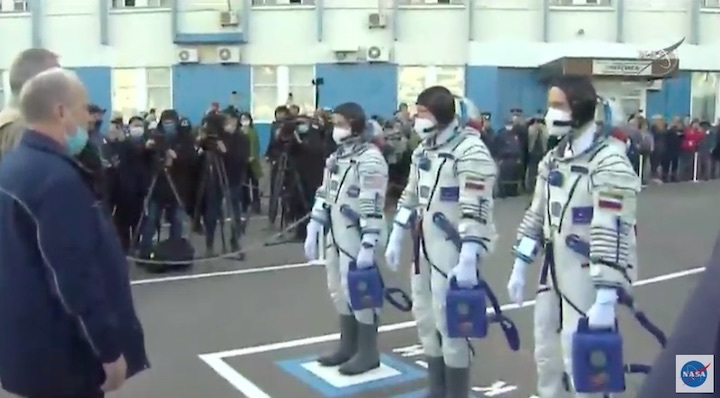
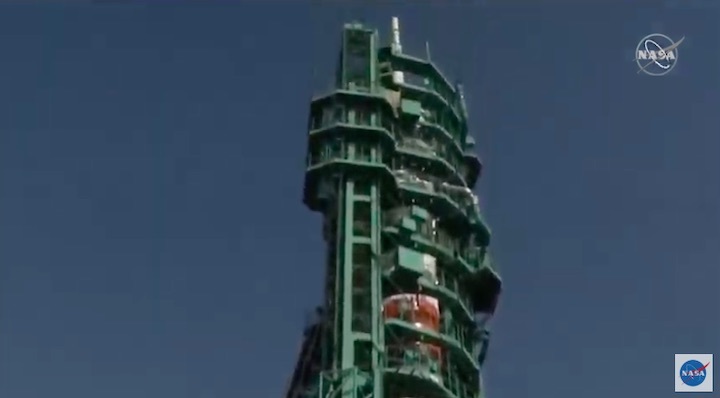
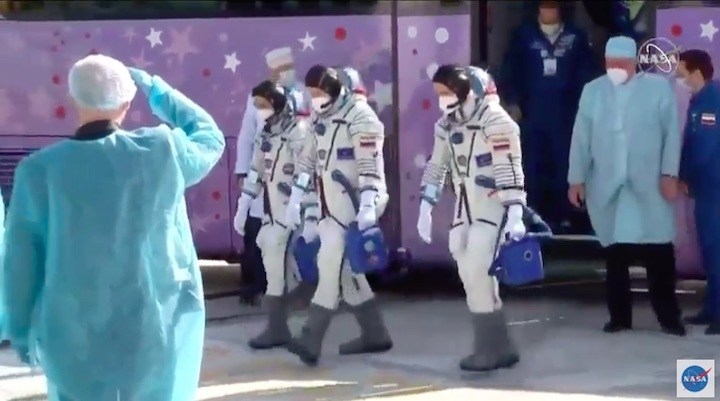
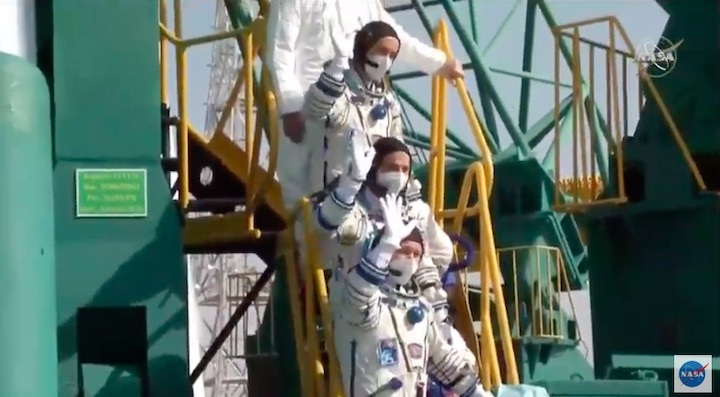
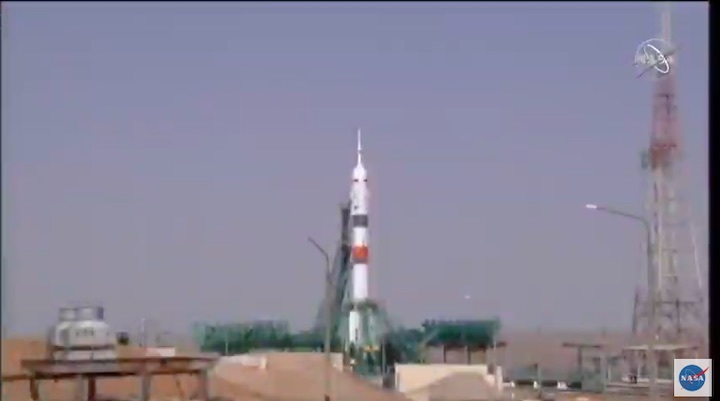
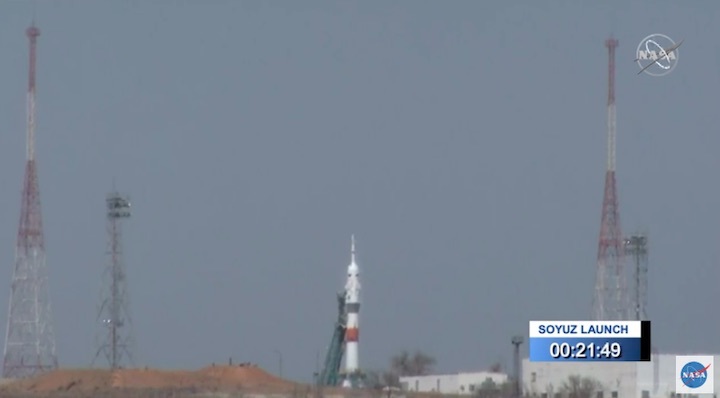
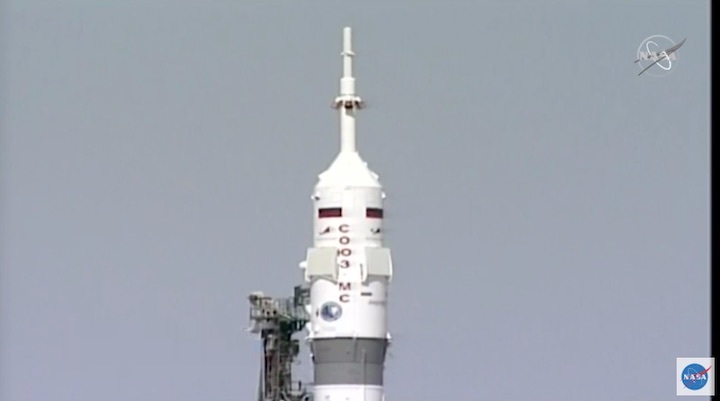


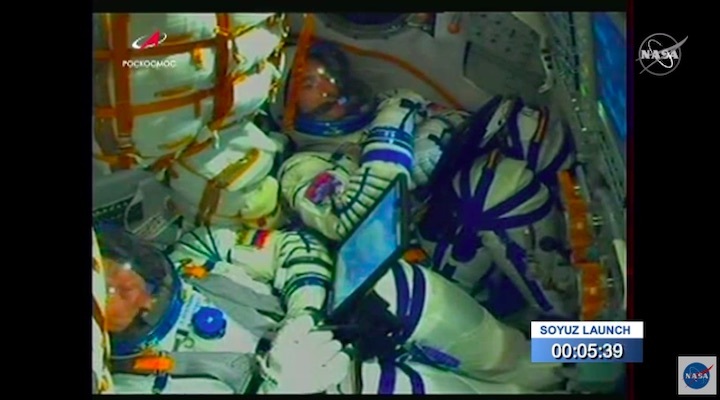
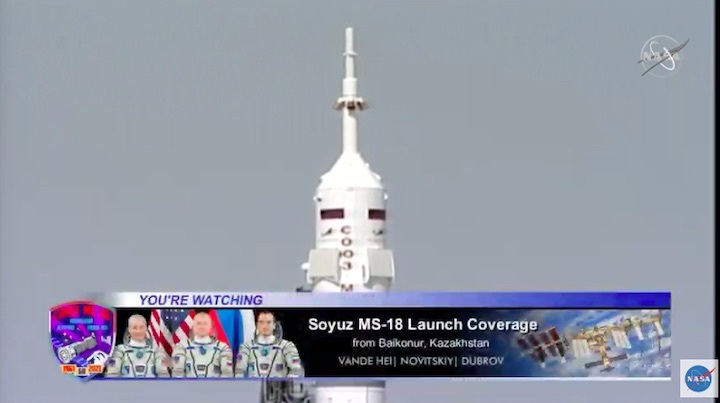
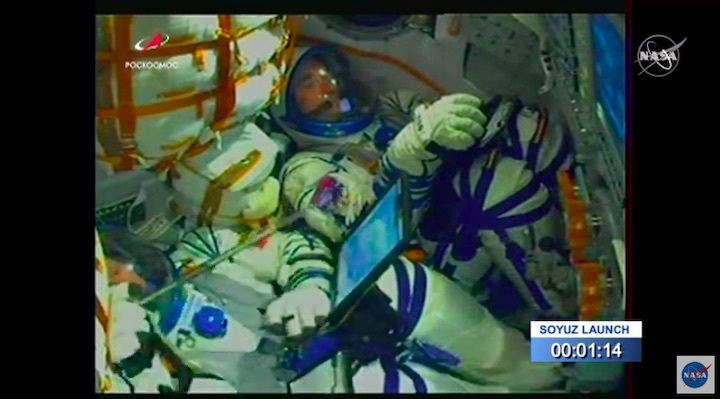
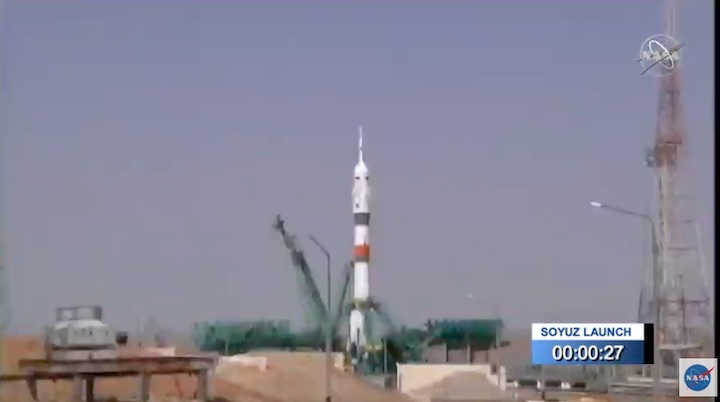

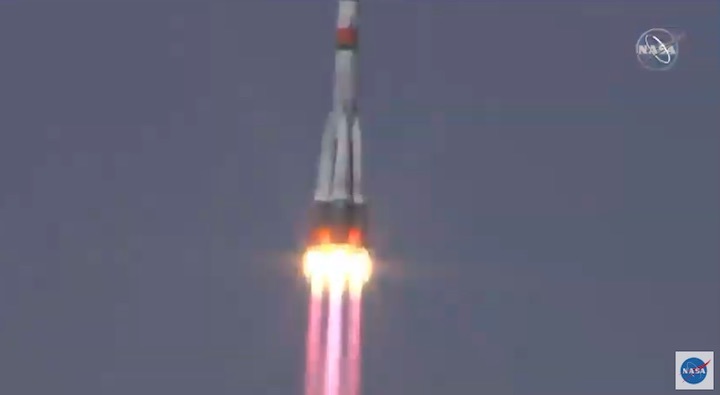
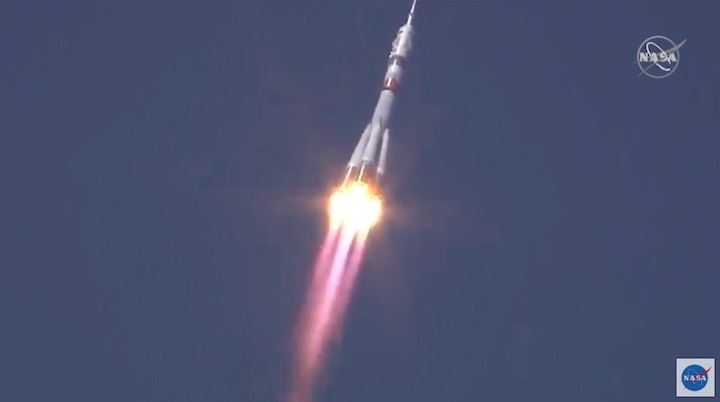
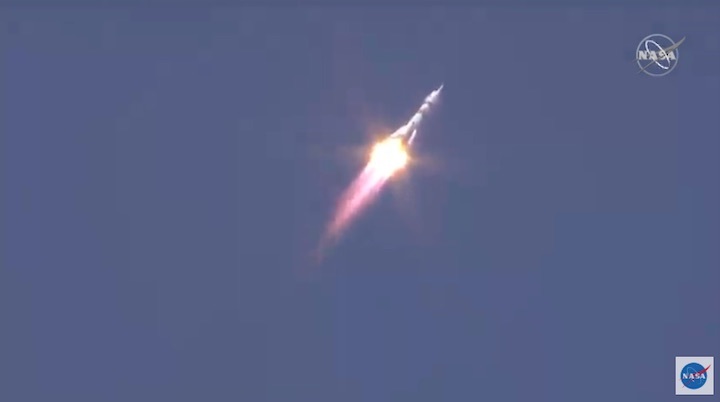

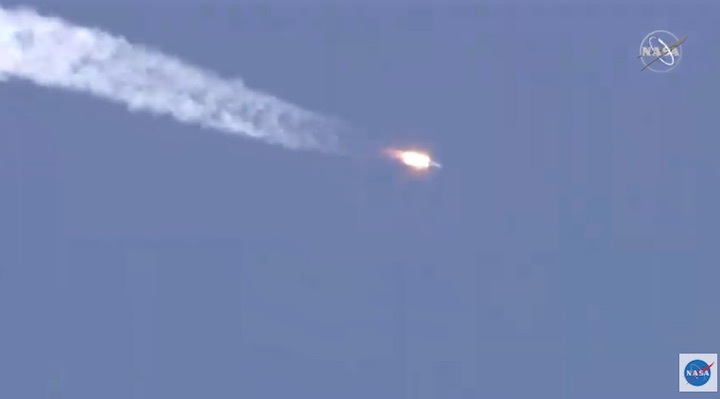

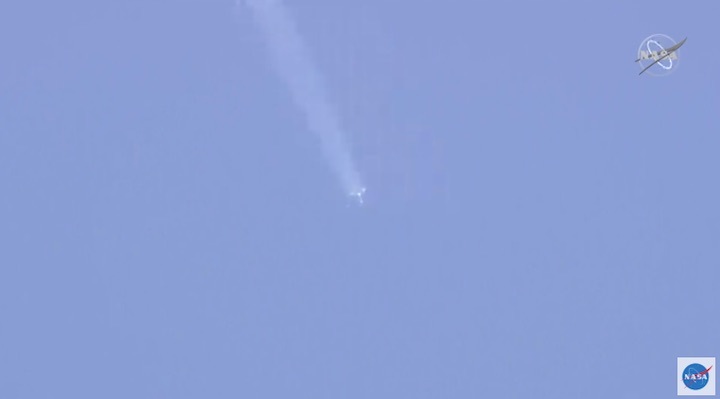
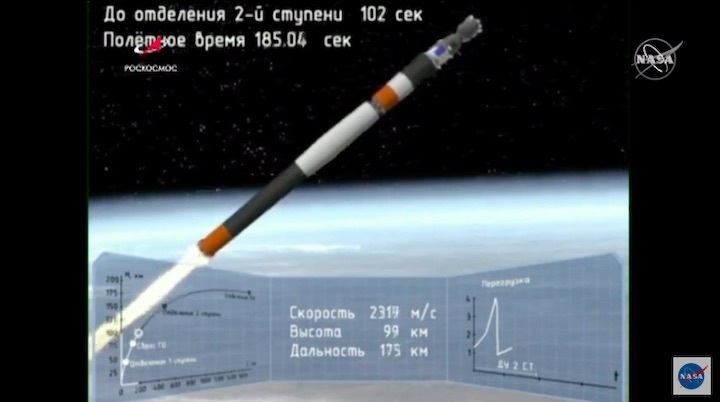

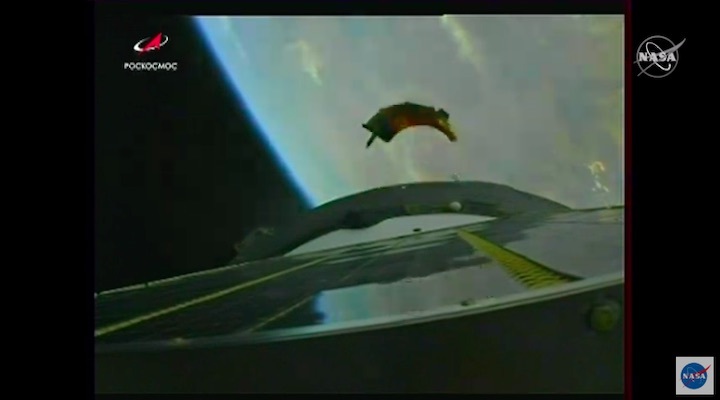
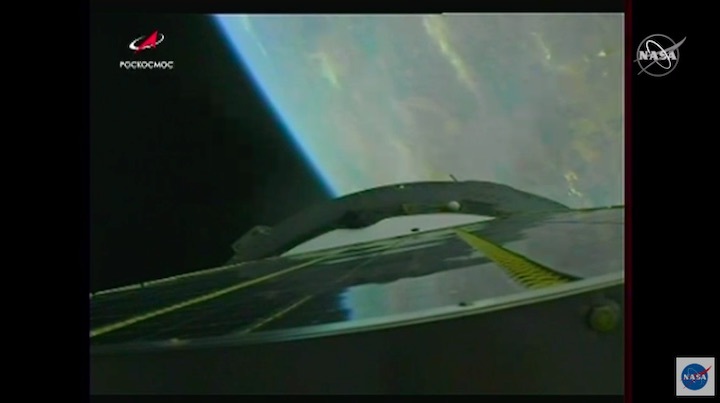
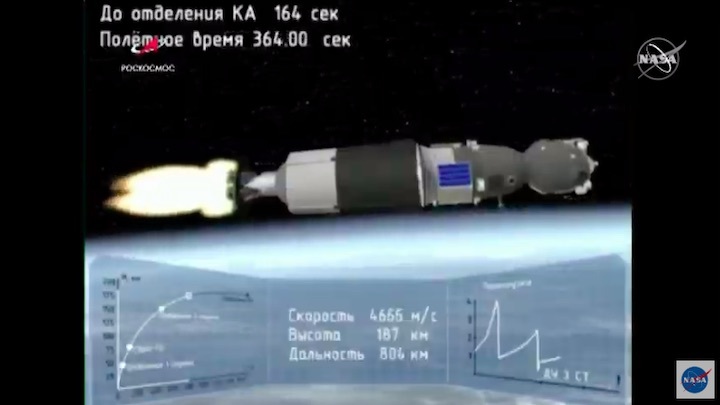
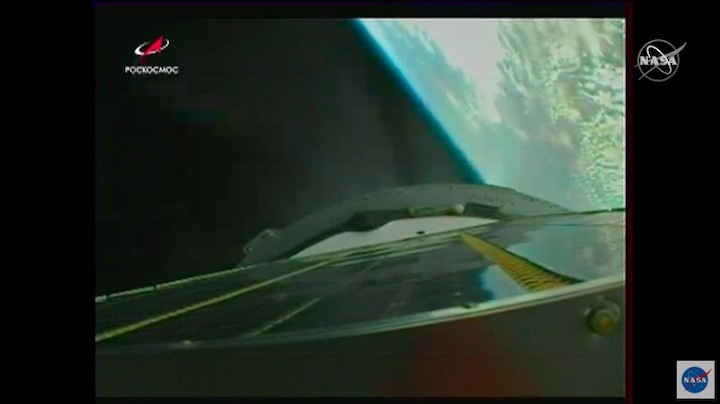
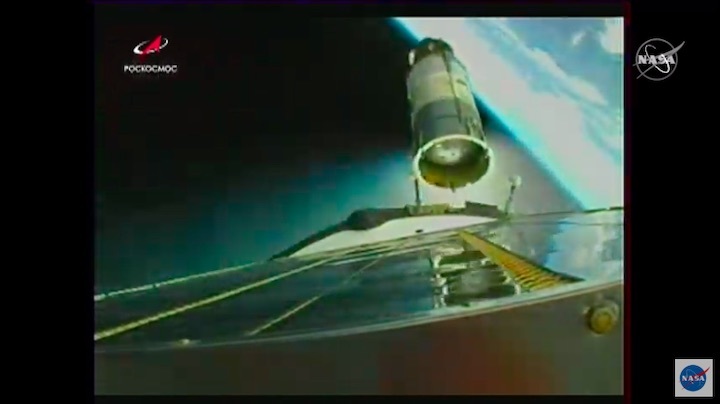
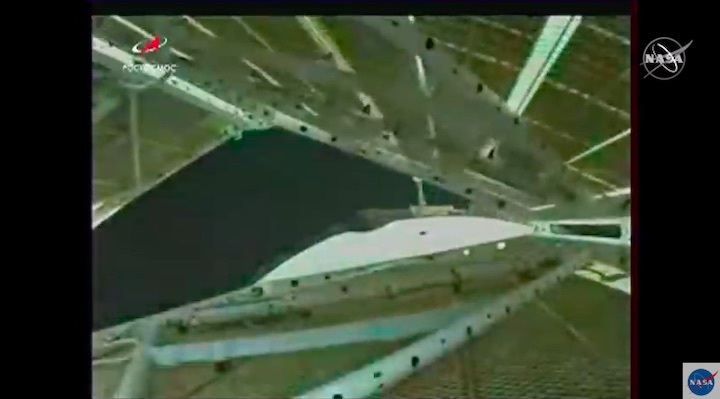
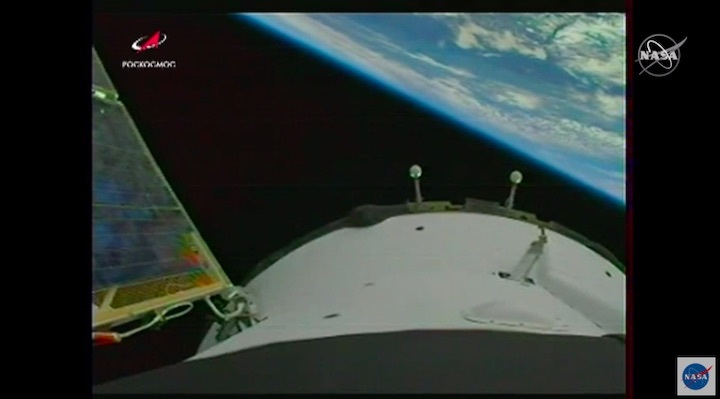
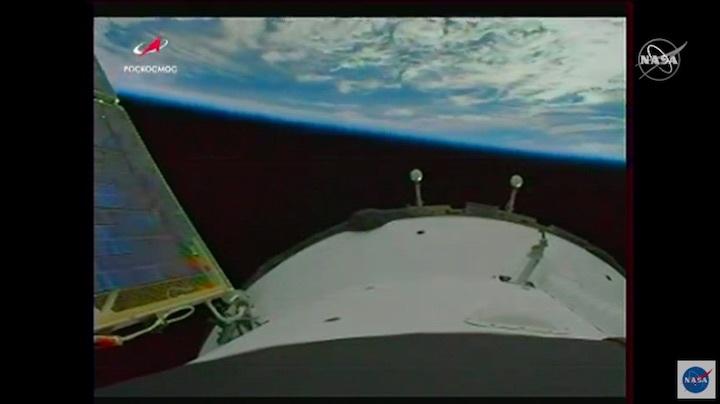
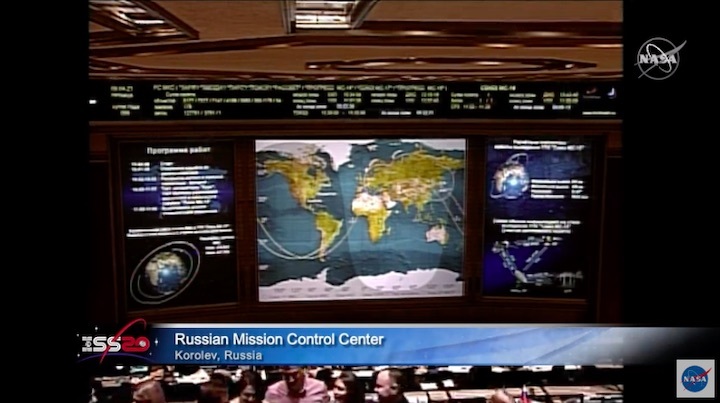
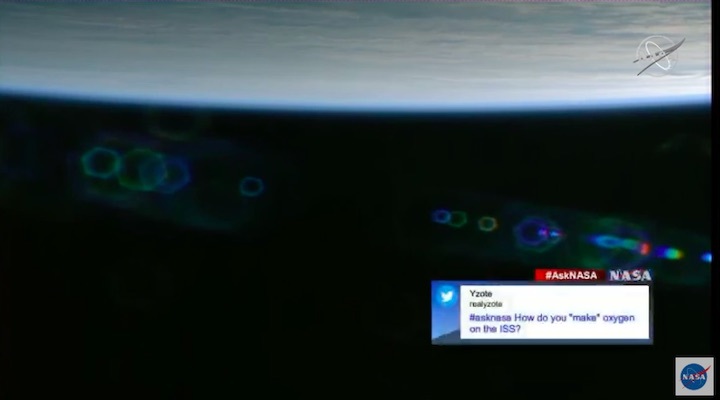
Quelle: NASA-TV
----
Update: 14:00 MESZ
.
Docking Soyuz MS-18 Gagarin mit ISS

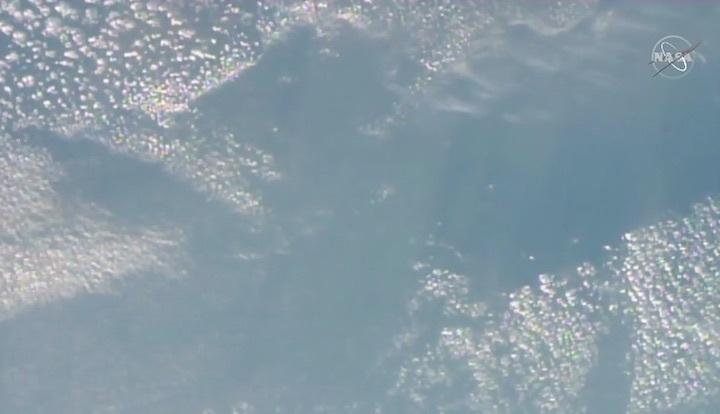

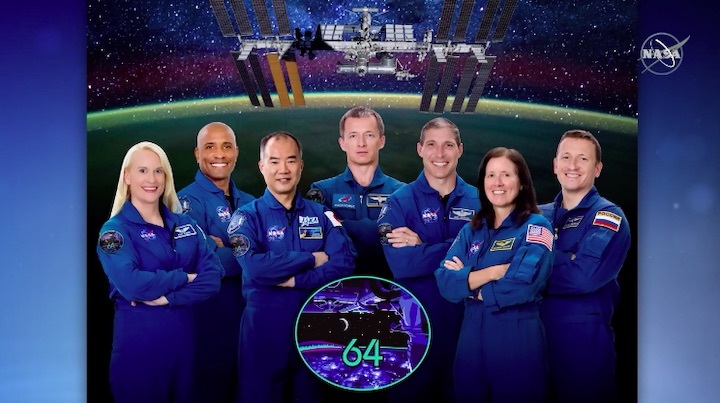

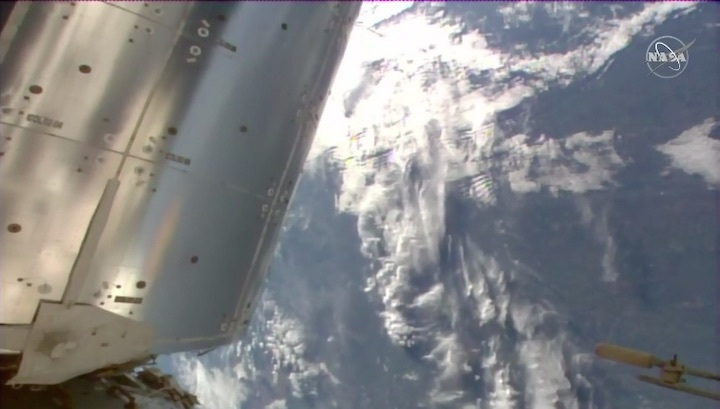
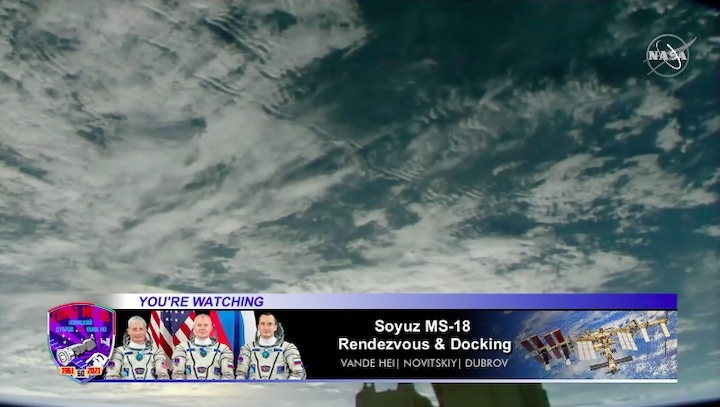

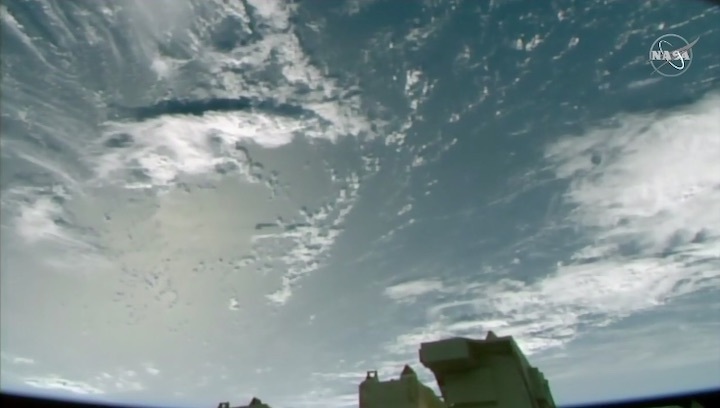
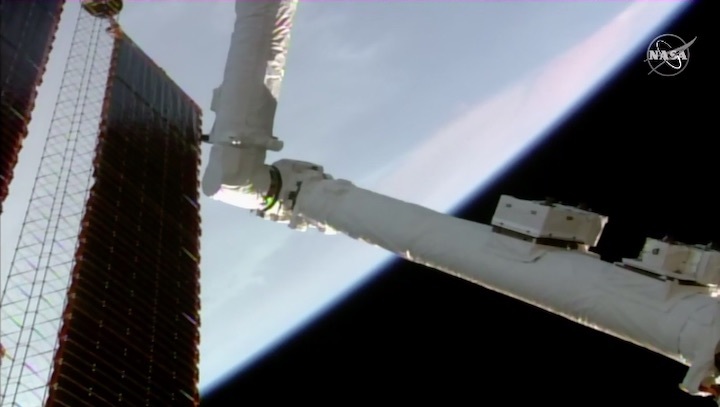
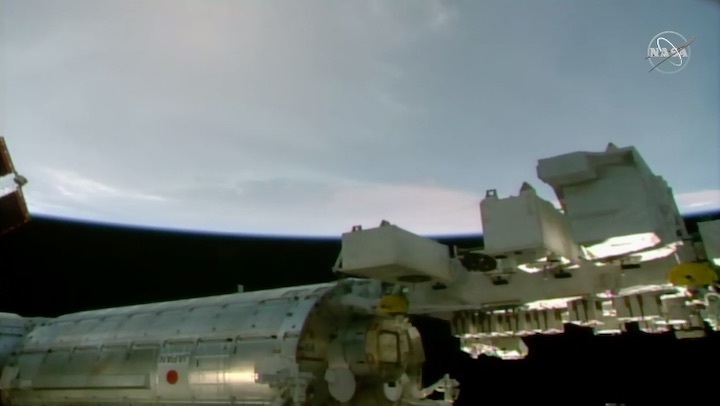

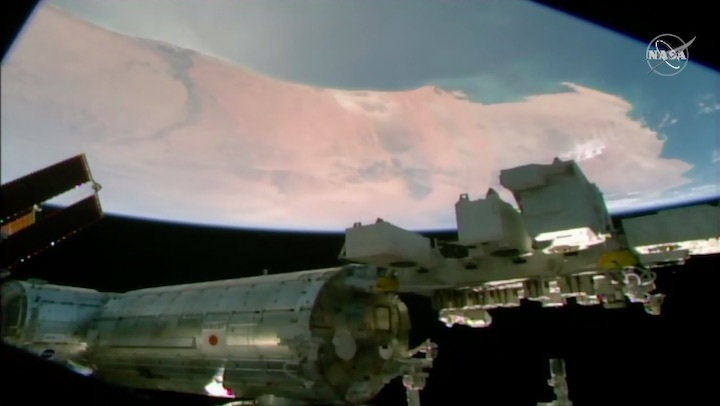
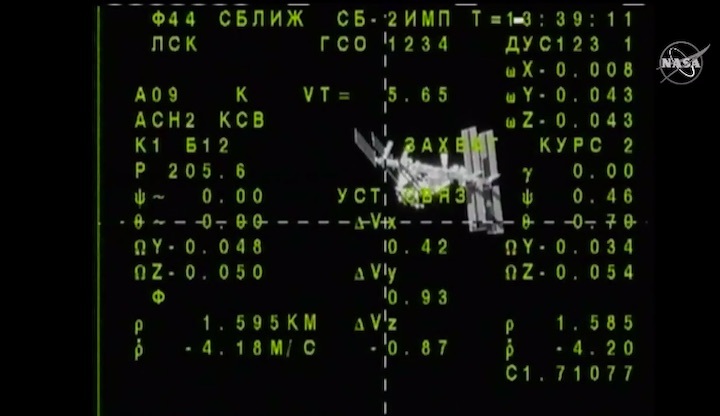


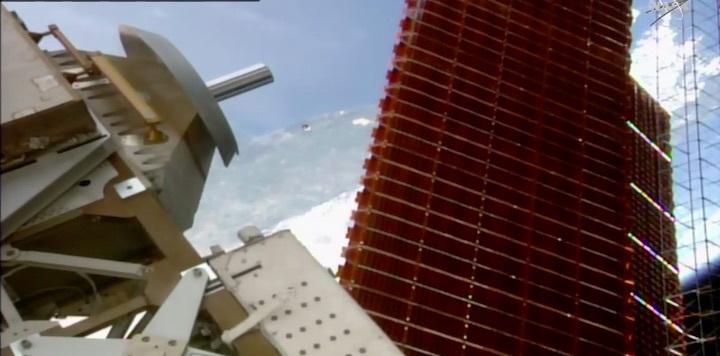

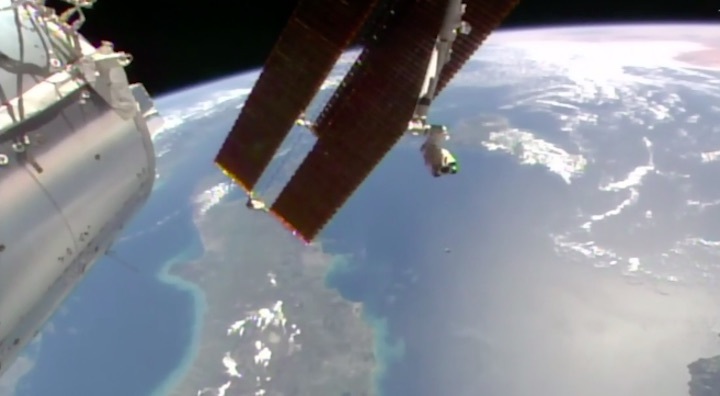
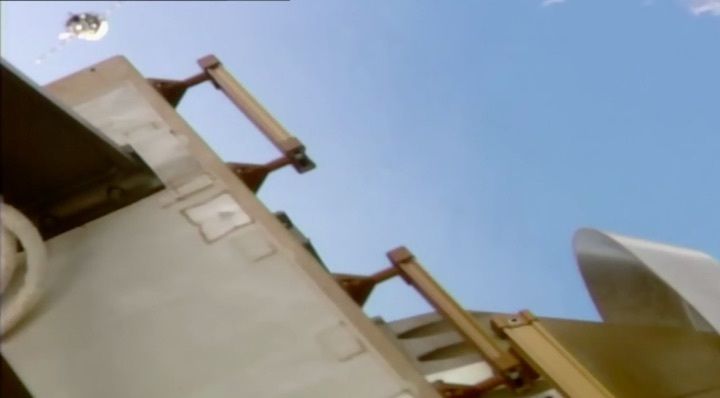
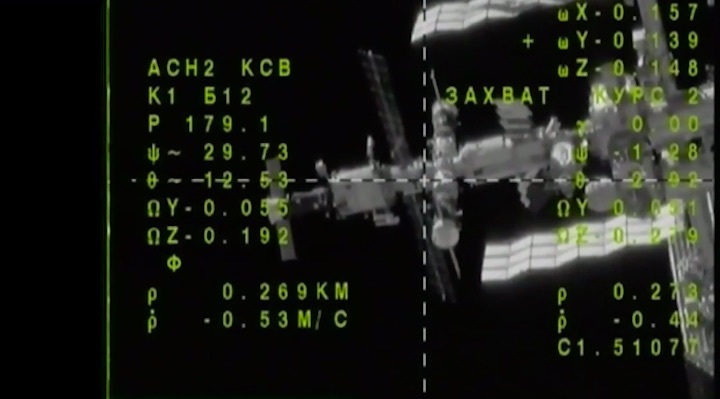
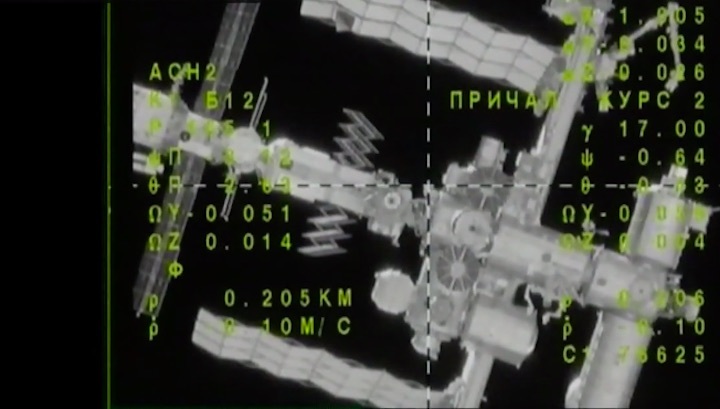
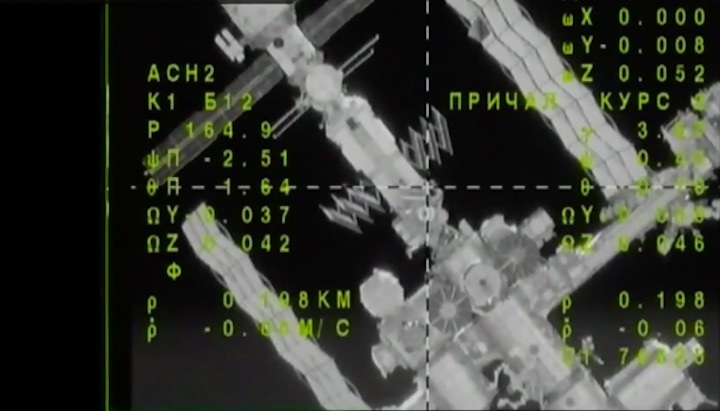

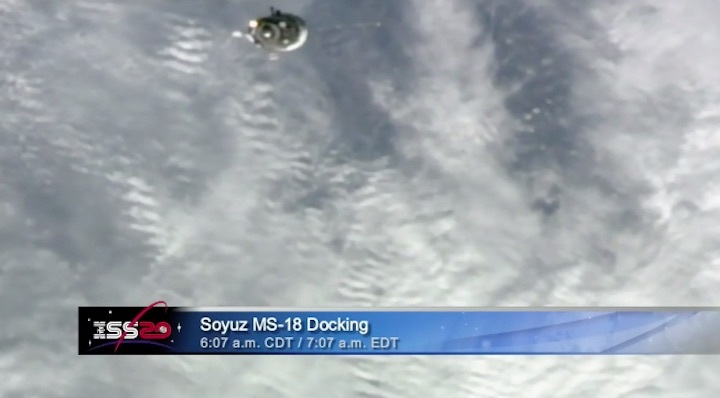
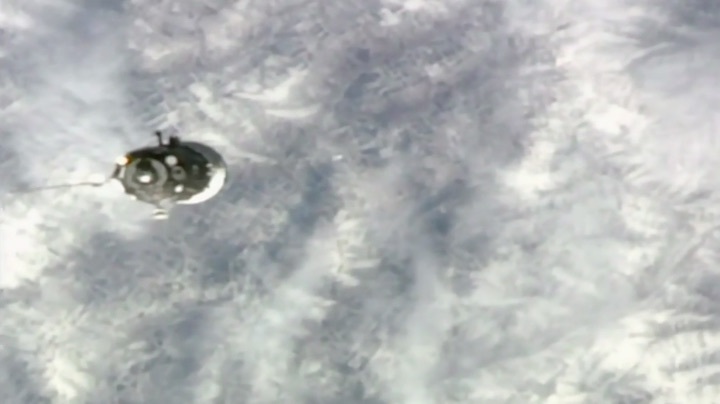

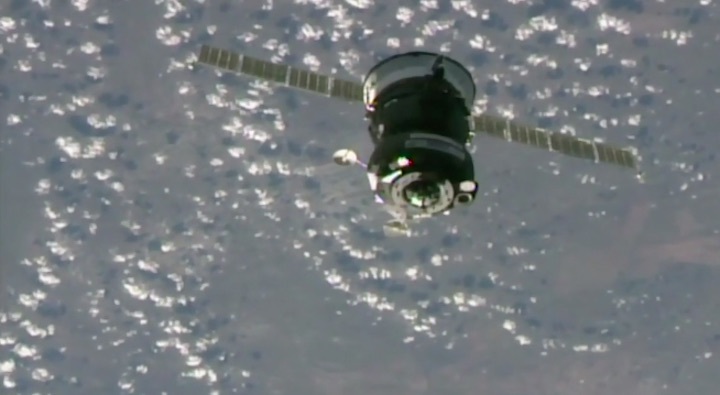
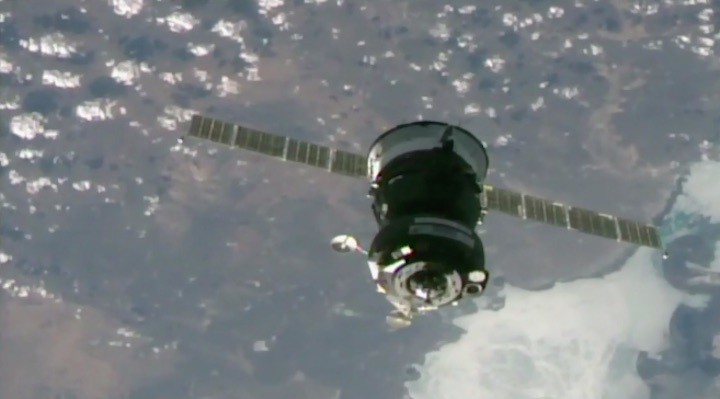

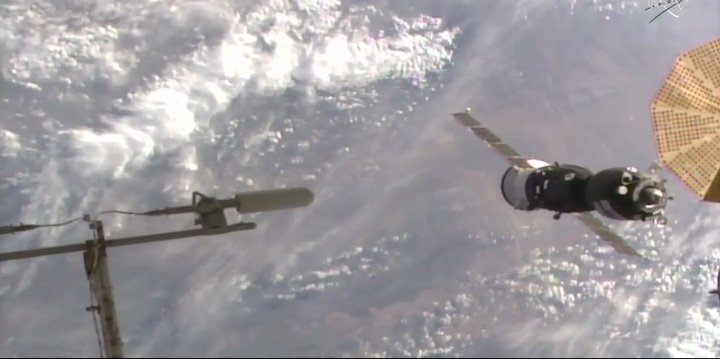
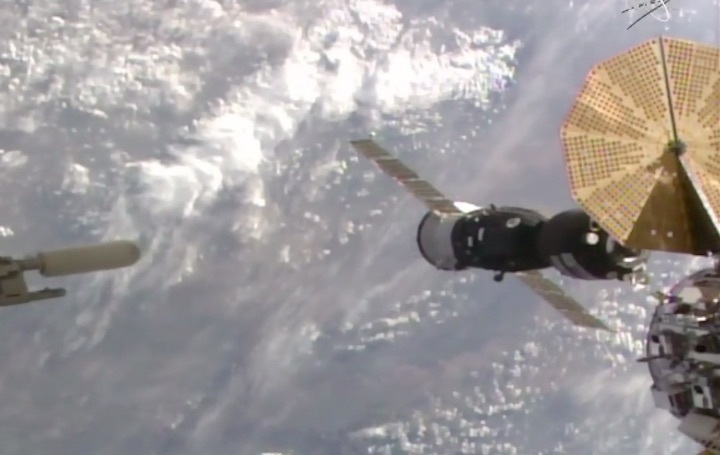
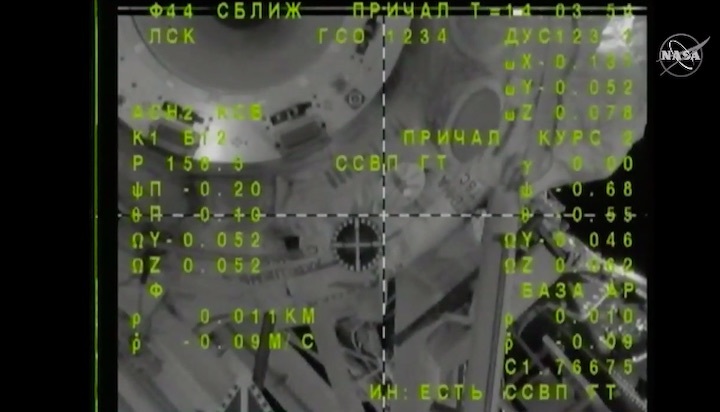
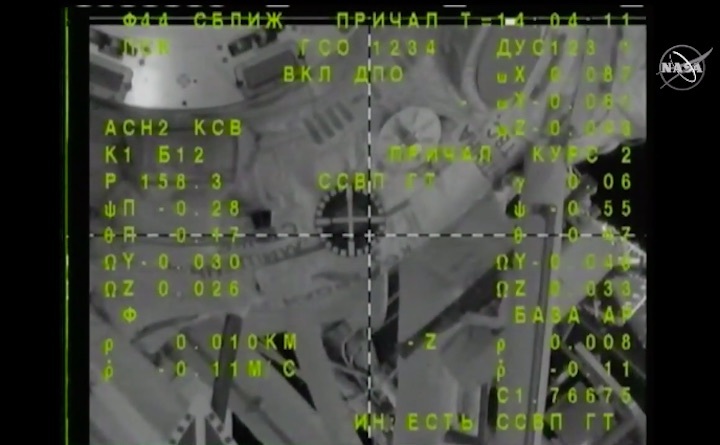
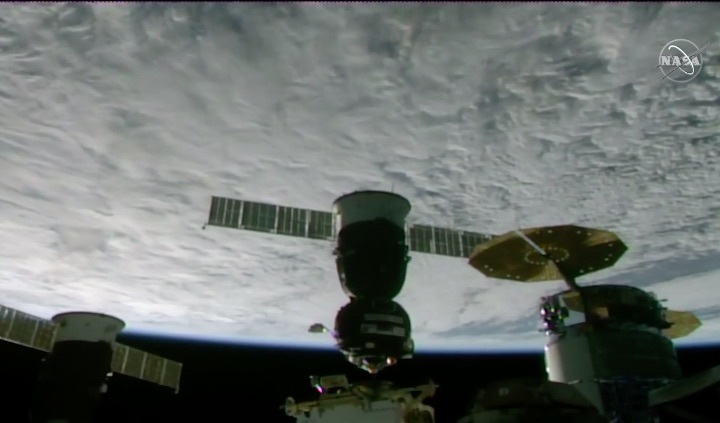
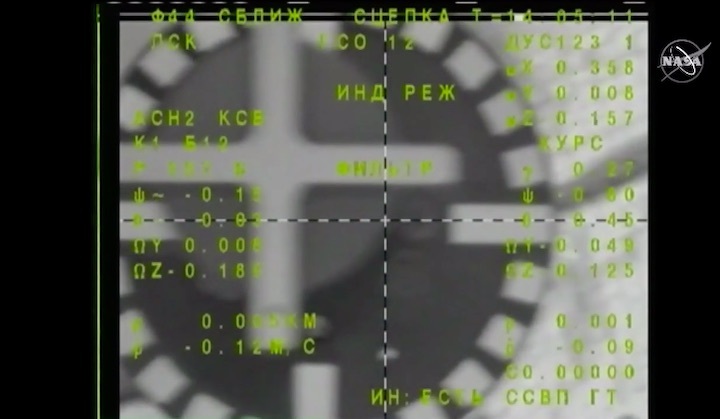
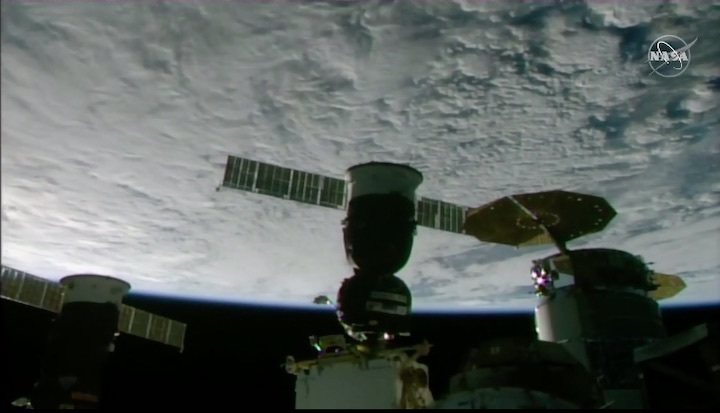
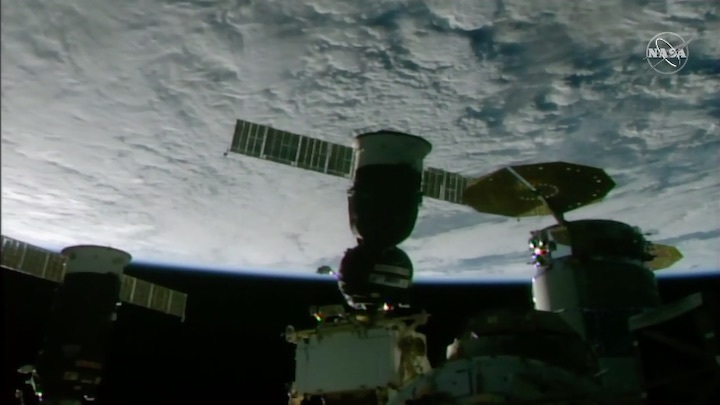

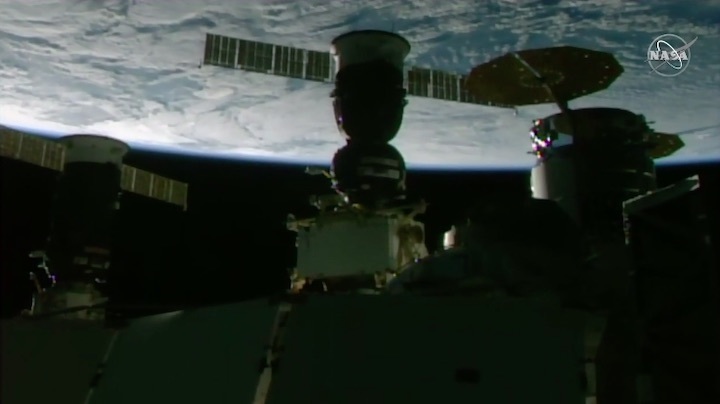
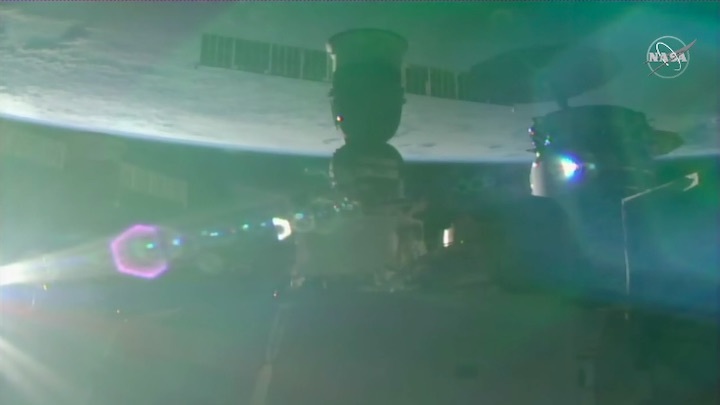

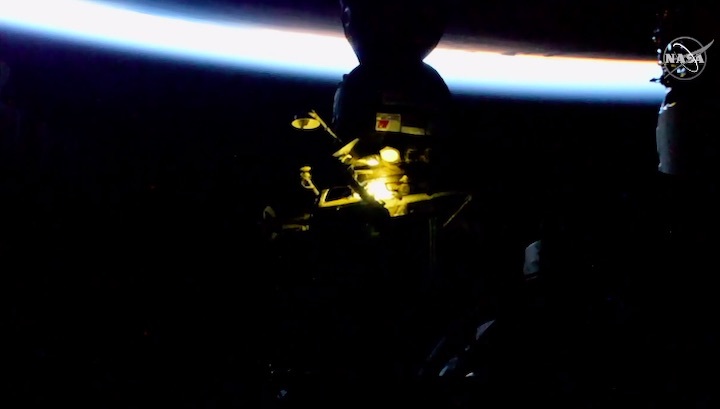
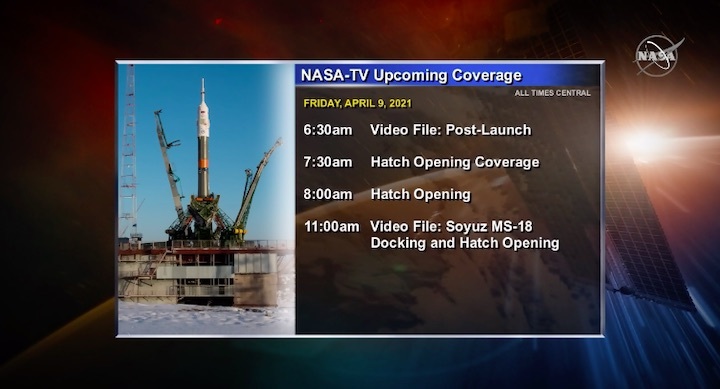
Quelle: NASA-TV
+++
NASA Astronaut Mark Vande Hei, Crewmates Arrive Safely at Space Station
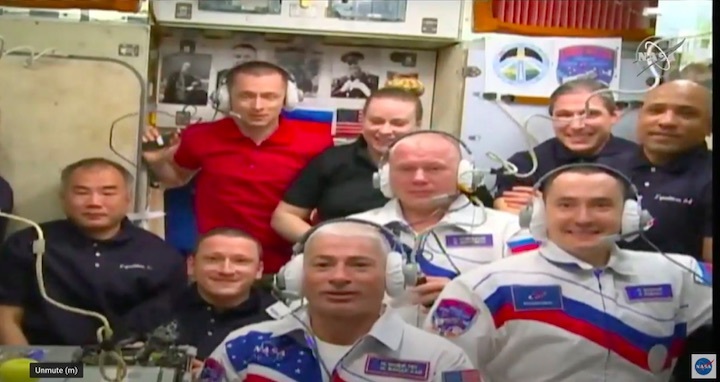
NASA astronaut Mark Vande Hei and two Russian cosmonauts arrived at the International Space Station Friday, bringing its number of residents to 10 for the coming week.
The Soyuz MS-18 spacecraft carrying Vande Hei and cosmonauts Oleg Novitskiy and Pyotr Dubrov of the Russian space agency Roscosmos docked to the station’s Rassvet module at 7:05 a.m. EDT. Docking occurred two orbits and about three hours after a 3:42 a.m. launch from the Baikonur Cosmodrome in Kazakhstan.
Vande Hei, Novitskiy, and Dubrov will join the Expedition 64 crew when hatches open about 9 a.m. Expedition 65, with NASA astronaut Shannon Walker as commander, will begin Friday, April 16, upon the departure of NASA’s Kate Rubins, Roscosmos’ Sergey Kud-Sverchkov, and departing station commander Sergey Ryzhikov. The trio will land in Kazakhstan following a six-month stay aboard the orbiting laboratory.
The change of command ceremony with all crew members is scheduled for 3:45 p.m. Thursday, April 15, and will air live on NASA Television, the NASA app, and the agency’s website.
This marks the second spaceflight for Vande Hei, the third for Novitskiy, and the first for Dubrov. During a six-month stay aboard the orbiting laboratory, the trio will work on science and research in technology development, Earth science, biology, human research, and more.
During Expedition 65, the arrival of Crew-2 aboard the SpaceX Crew Dragon will bring four more members to the International Space Station. Crew-2 is currently scheduled for launch on Earth Day, Thursday, April 22. Crew-1, the first long-duration commercial crew mission, will return to Earth on April 28.
In November 2020, the International Space Station surpassed its 20-year milestone of continuous human presence, providing opportunities for unique technological demonstrations and research that help prepare for long-duration missions to the Moon and Mars while also improving life on Earth. To date, 243 people from 19 countries have visited the orbiting laboratory that has hosted nearly 3,000 research investigations from researchers in 108 countries and areas.
Quelle: NASA
